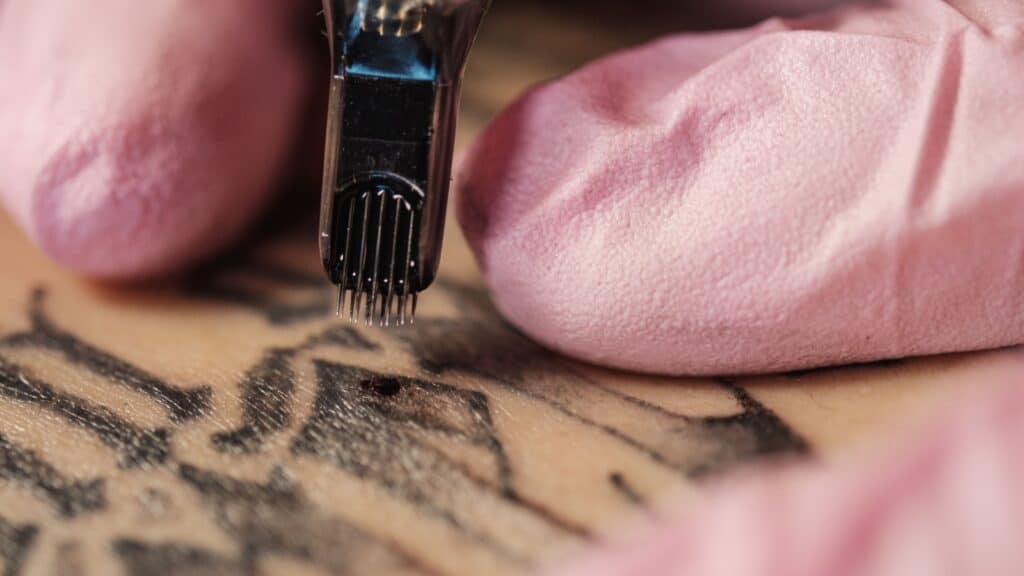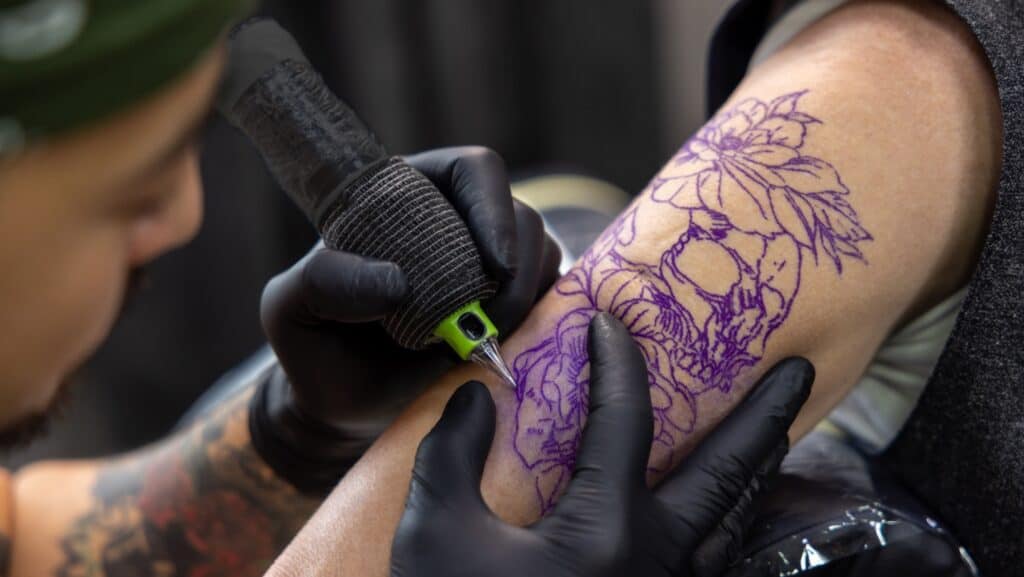The Hidden Dangers of Tattoo Ink: What You Should Know Before Getting Inked
Tattoos are a centuries-old form of self-expression, a permanent canvas where art meets identity. However, as tattoos grow in popularity, with an estimated 30% of Americans sporting at least one, many consumers remain unaware of the murky regulatory waters surrounding tattoo ink. This lack of regulation raises critical questions about what exactly is being injected into your skin and the potential health implications.
Why Is Tattoo Ink Unregulated in the U.S.?

The U.S. Food and Drug Administration (FDA) is the primary agency responsible for regulating products applied to or introduced into the human body. While the FDA oversees the safety of cosmetics and drugs, tattoo ink falls into a gray area. Historically, tattooing was a niche industry, and its materials were not subject to close scrutiny. Consequently, tattoo ink has largely escaped regulation.
The FDA’s Perspective

The FDA does have the authority to regulate tattoo inks under the Federal Food, Drug, and Cosmetic Act. However, the agency has chosen to exercise “enforcement discretion,” focusing primarily on instances of reported adverse reactions or contaminated products. This reactive rather than proactive approach leaves the door open for untested and potentially hazardous substances to be used.
A primary reason for this regulatory gap is resource constraints. The FDA prioritizes high-impact public health concerns, and tattoo ink has not traditionally ranked high on its list. Additionally, the tattoo industry’s rapid growth and lack of standardized practices have made it challenging to implement comprehensive regulations.
What Is Tattoo Ink Made From?

The ingredients in tattoo ink are as diverse as the colors on an artist’s palette. Tattoo ink generally consists of two components: pigments and a carrier solution. However, the specifics can vary widely, and many formulations are proprietary.
Pigments

Pigments are the substances that provide color to the ink. Historically, pigments were derived from natural sources such as minerals and plants. Modern tattoo inks, however, often use synthetic pigments, which can include:
- Metal salts: These are commonly used for vibrant colors. For example, red inks may contain mercury sulfide, while greens and blues often rely on copper compounds.
- Plastics: Some inks incorporate plastic-based pigments for brighter and longer-lasting colors.
- Organic compounds: Carbon black is a prevalent pigment for black ink, while azo pigments are used for reds, oranges, and yellows.
Carrier Solutions

Carrier solutions are liquids that help distribute the pigment evenly and prevent contamination. Common components include:
- Alcohols: Such as ethanol or isopropyl alcohol, which sterilize the mixture.
- Glycerin: A thickener that ensures smooth application.
- Water: Often used as a diluent.
- Preservatives: To prevent microbial growth.
While these ingredients may seem harmless, the reality is more complex. Many pigments were never intended for use in tattoo ink but were originally developed for industrial purposes such as automobile paint or printing ink. The lack of safety data on how these substances interact with human tissue raises serious concerns.
What Should Consumers Be Concerned About?

Consumers should approach tattooing with caution and awareness. Here are some key concerns:
Toxicity

Certain pigments contain heavy metals such as lead, arsenic, and cadmium, which are toxic and can accumulate in the body over time. Studies have also shown that some pigments can break down under UV exposure or during laser removal, releasing potentially carcinogenic compounds.
Contamination

The lack of regulation means that tattoo inks can be contaminated with bacteria, mold, or harmful chemicals. A 2019 FDA study found that several tattoo inks contained harmful microorganisms, posing risks of infection and allergic reactions.
Allergic Reactions

Tattoo ink can trigger allergic responses, ranging from mild irritation to severe inflammation. Red pigments are particularly notorious for causing allergies due to their chemical composition.
Long-Term Effects

The long-term health effects of tattoo ink are not well understood. Recent research suggests that tattoo pigments can migrate to lymph nodes and other parts of the body, potentially impacting immune function. Moreover, the impact of degraded ink particles on overall health remains an open question.
Lack of Ingredient Transparency

Manufacturers are not required to disclose the full list of ingredients in their inks, making it difficult for consumers to make informed decisions. Without this transparency, it’s impossible to fully assess the risks.
Is Tattoo Ink Regulated Outside the U.S.?

In contrast to the U.S., some countries and regions have stricter regulations for tattoo ink.
European Union

The EU has taken significant steps to regulate tattoo inks. Under the European Chemicals Agency (ECHA), a list of restricted substances has been established, and manufacturers must comply with strict safety standards. In January 2022, the EU banned the use of over 4,000 harmful chemicals in tattoo inks, including certain azo pigments and preservatives.
Australia

Australia’s regulatory framework includes mandatory safety assessments for tattoo inks. Imported inks must meet specific health standards, and violations can result in fines or product recalls.
Canada

Health Canada regulates tattoo inks under the Food and Drugs Act, requiring that manufacturers provide evidence of safety and quality. However, enforcement remains inconsistent.
Other Regions

Countries such as Japan and South Korea have also introduced regulations to varying degrees, reflecting growing global awareness of the potential risks associated with tattoo inks.
How to Protect Yourself as a Consumer

While regulatory reform may be on the horizon, consumers must take proactive steps to safeguard their health:
- Research Your Tattoo Artist: Choose a reputable tattoo artist who prioritizes hygiene and uses high-quality inks from trusted suppliers.
- Ask Questions: Don’t hesitate to ask your artist about the ink they use. Request ingredient lists or safety certifications if available.
- Conduct a Patch Test: If you have sensitive skin or a history of allergies, consider a patch test before committing to a full tattoo.
- Avoid Certain Colors: Red, yellow, and white inks are more likely to cause allergic reactions or contain harmful substances.
- Stay Informed: Keep up-to-date with regulatory developments and scientific studies related to tattoo inks.
- Monitor Your Health: If you experience unusual symptoms after getting a tattoo, seek medical attention promptly.
The Call for Greater Regulation

The lack of oversight in the U.S. tattoo ink industry underscores the need for comprehensive regulation. Advocacy groups and medical professionals are calling for stricter standards, including mandatory ingredient disclosure, safety testing, and better enforcement.
What Do You Think?

In the meantime, the responsibility largely falls on consumers to educate themselves and make informed choices. Tattoos are a beautiful and meaningful form of self-expression, but understanding the risks is crucial for ensuring that your body art remains a safe and positive experience.
Top 10 Sunscreen Mistakes That Could Be Harming Your Skin (And How to Avoid Them)

Sunscreen is your skin’s first line of defense against premature aging and skin cancer. Yet, many of us unknowingly make mistakes that compromise its effectiveness. Dermatologists emphasize that proper sunscreen use is crucial for maintaining youthful, healthy skin. Are you using it correctly? Are you using it at all? We hope so! Here are some common mistakes that are commonly seen.
READ: Top 10 Sunscreen Mistakes That Could Be Harming Your Skin (And How to Avoid Them)
Join Us

Join us on this empowering journey as we explore, celebrate, and elevate “her story.” The Queen Zone is not just a platform; it’s a community where women from all walks of life can come together, share their experiences, and inspire one another. Welcome to a space where the female experience takes center stage. Sign up for our newsletter so you don’t miss a thing, Queen!







